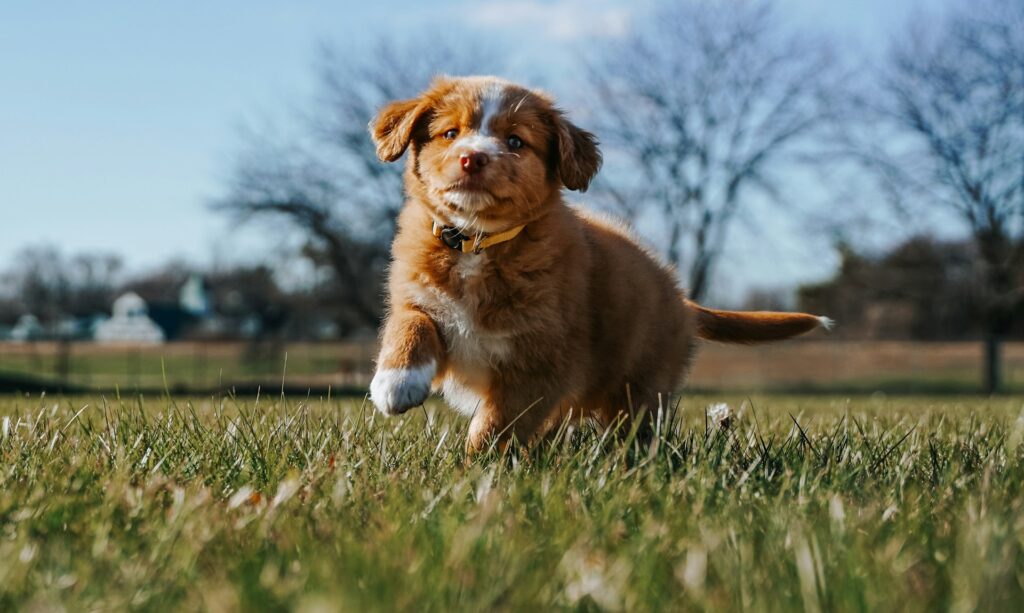Foundations for a Well-Behaved Future: Puppy Obedience Training Tips
Starting puppy obedience training is an exciting journey that can greatly improve your home life and the long-term behaviour of your furry companion. From forging a stronger bond to ensuring your pup develops good manners, the benefits of a well-trained dog cannot be overstated. Training your puppy takes consistent practice and plenty of patience, but with the right approach, the experience can be rewarding and fun for all involved.
Starting your puppy’s training as early as possible sets the foundation for a well-mannered adult dog. Basic commands not only keep your pup safe but also facilitate easier handling during vet visits or walks. Obedience training helps to prevent the development of problematic behaviours, allowing you to address any issues promptly before they become ingrained habits. Remember that training isn’t just about commands; it’s about communication and understanding between you and your puppy.
Advanced training techniques can help build on your puppy’s skillset and provide mental stimulation, crucial for their development. While allotting time to train your puppy at home is invaluable, sometimes enlisting the help of professionals like those at Allbreeds can offer additional support and guidance. With frequent practice and the occasional expert advice, you can mould your pup into a well-adjusted and obedient canine.
Key Takeaways
- Obedience training enhances the bond with your puppy and encourages good behaviour.
- Training should start early, with an emphasis on communication and addressing bad habits.
- Professionals can provide extra help, enriching your puppy’s learning experience.

Setting the Foundation
Before you embark on the journey of puppy obedience training, it’s essential to understand your puppy’s behaviour and the significance of early socialisation. Building a strong foundation involves nurturing the bond between you and your puppy, interpreting their body language, and recognising their natural temperament and attention span.
Understanding Puppy Behaviour
Your puppy’s temperament and body language are key indicators of their emotional state and intentions. Early interactions can reveal a lot about your puppy’s personality:
- Temperament: Observe if your pup is shy, confident, or assertive. Each trait demands a different approach to training.
- Attention Span: Puppies have limited attention spans. Short, targeted sessions are more effective and keep them engaged.
It’s crucial to tailor your training to align with these behaviours, perceiving them as stepping stones to building a well-mannered adult dog.
The Importance of Socialisation
Socialisation is a critical component of your puppy’s development:
- Expose your puppy to various interactions with people, dogs, and environments to foster adaptability.
- Ensure experiences are positive and controlled to encourage good behaviour.
Proper socialisation can prevent behavioural issues in the future and create a sociable, well-adjusted dog. It sets the stage for a lifetime of learning and companionship.
Basic Commands and Obedience Training
Mastering the basic commands of ‘sit’, ‘stay’, and ‘come’ are the cornerstones of puppy obedience training. These foundational skills contribute to a well-behaved dog and a harmonious relationship between you and your pet. When embarking on training, remember that your consistency, use of positive reinforcement, and patience are pivotal to success.
Teaching ‘Sit’, ‘Stay’, and ‘Come’
To teach your puppy to sit, hold a treat close to their nose and move your hand up, allowing their head to follow the treat and causing their bottom to lower. Once they’re in the sitting position, say “sit”, give them the treat, and share a moment of praise. For teaching stay, ask your puppy to sit, open your palm in front of you, say “stay” and take a few steps back. Reward them with a treat if they stay. Increase the duration and distance over time. When practising come, start by kneeling on the ground, and with a happy tone, say “come” while gently pulling on their leash. When they do come to you, reward them with lots of praise and a treat.
Training should be consistent, and sessions should remain short to hold your puppy’s attention.
Leash Training Basics
Leash training is crucial for safety and control, and it’s best to start early. To begin, get your puppy used to the leash and collar. Let them wear it for short periods around the house with supervision. Then, start walking indoors. As they walk without pulling, immediately reward them to reinforce the correct behaviour. Use positive reinforcement and gradually introduce outdoor distractions.
House-Training
House training, or potty training, requires you to establish a routine. Take your puppy outside frequently, especially after eating or sleeping. Give them command words like “outside” or “potty”, and reward them immediately after they’ve done their business to reinforce this behaviour.
In all aspects of training, rewarding your puppy with treats, praise, and play makes the experience positive. Maintaining consistency with commands, rewards, and routines will ensure quicker and more effective learning.
Preventing and Addressing Problematic Behaviours
Training your puppy often means preventing and managing behaviours that can become problematic if not addressed early on. Ensuring safety for both your puppy and family while instilling good behaviour is paramount to harmonious living.
Dealing with Biting and Chewing
Puppyhood is a critical time for teaching bite inhibition — the ability to control the strength of mouthing. A puppy must learn to moderate their bite before their jaw strength develops fully to prevent aggressive behaviour. When your puppy bites, respond with a firm “no” and replace your hand with a chew toy. Consistency is key; ensure every family member follows the same protocol to avoid confusion for your puppy.
Chewing is a natural behaviour for puppies, but it’s important to direct it towards appropriate items. Keep valuable items out of reach and supply plenty of puppy-safe chew toys. If you catch your puppy chewing on something they shouldn’t, calmly redirect them to a chew toy and praise them when they switch their attention.
Reducing Barking and Whining
Barking and whining are forms of communication, but it’s essential to teach your puppy to express themselves without excessive noise. Address the reasons behind the barking — from attention-seeking to alerting danger — and aim to fulfil your puppy’s needs without reinforcing negative behaviours. Distraction and obedience training can redirect their focus and reward silence.
If your puppy whines, check their basic needs first: are they hungry, thirsty, or need to go outside? If these are satisfied, they may seek attention or be anxious about being alone. Teaching your puppy to be comfortable alone is important; start with short periods of separation and gradually increase the time.
Advanced Training Techniques
Elevating your dog’s training from basic commands to more sophisticated skills not only enhances their obedience but also provides essential mental and physical stimulation. Focus on developing a deeper bond through leadership and fun, interactive activities that challenge both mind and body.
Mastering Recall and ‘Heel’
Understanding reliable recall is vital for your dog’s safety and your peace of mind. Training in a distraction-free environment works to gradually increase the level of distractions to test and improve your dog’s responsiveness. Always reward them with treats or play to reinforce positive behaviour. Develop the ‘heel’ command to keep your dog walking calmly by your side. This requires patience and consistency, utilising short sessions to prevent fatigue and maintain enthusiasm.
- Start with a lead in a quiet area; progress to more challenging environments.
- Use a cheerful voice to call them back, rewarding them immediately upon their return.
Introducing Tricks and Dog Sports
Incorporating tricks and dog sports into training sessions adds an element of fun while strengthening your bond and reinforcing your role as a leader. Teach tricks in small steps, using hand signals and verbal cues. Ensure the activities suit your dog’s breed and physical capabilities for maximum enjoyment and benefit.
- Tricks such as ‘roll over’ or ‘play dead’ boost cognitive skills and provide entertainment.
- Dog sports like agility or rally obedience can significantly enhance physical fitness and mental agility.
The Role of Dog Training Professionals Like Allbreeds
When you’re considering obedience training for your puppy, engaging with professionals such as Allbreeds can be a vital decision. Trained experts understand the nuances of canine behaviour, making it simpler for you to navigate the course of teaching your puppy.
Advantages of Professional Training Programs
- Structure: Professionals offer structured training that can guide your puppy through learning in a consistent and progressive way.
- Expertise: With skilled trainers, you benefit from their deep understanding of dog psychology and proven training methods that might be difficult to implement on your own.
- Time Efficiency: Professionals help you make the most of your time with your puppy by teaching effective obedience skills quickly and effectively.
Moreover, Allbreeds provides an environment where your puppy can socialise, an essential aspect of their development. Exposure to different scenarios and other dogs under supervised conditions helps your puppy become well-adjusted and responsive.
Working with a professional team, you’ll gain insights into your puppy’s individual needs and tailored approaches to foster their obedience. Allbreeds emphasises the importance of positive reinforcement and clear communication.
With a firm and loving hand, Allbreeds helps you ensure that your puppy’s training lays down the foundation for a lifetime of good behaviour and companionship. With this support, you’re not just training a puppy, you’re raising a well-behaved member of your family.
Frequently Asked Questions
When embarking on puppy obedience training, understanding what to prioritise at different stages is crucial. Here’s what you need to know.
What are essential tips for training a puppy at home?
Provide consistent commands and immediate positive reinforcement for correct behaviour. Establish a routine for both training and playtime, ensuring the training environment is free from distractions to help your puppy focus.
What are the initial commands every puppy should learn?
Start with basics such as ‘sit,’ ‘stay,’ ‘come,’ and ‘down.’ These fundamental commands form the building blocks for more advanced training later.
How can you effectively house-train a puppy?
Establish a regular feeding schedule and take your puppy outside frequently, especially after meals or naps. Use a consistent toilet area and praise them immediately after they’ve done their business. Spotting signs before they need to go and responding promptly is key.
How long typically does it take to train a puppy to a good level of obedience?
While it varies depending on the individual puppy and the training consistency, basic obedience training can take a few weeks to several months. Continuing to reinforce and practise commands is essential for ongoing obedience.
What are the appropriate methods for disciplining a puppy during training?
Redirect negative behaviours to positive ones and always reinforce good behaviour. Gentle, positive training methods are far more effective and supportive of your puppy’s development.


